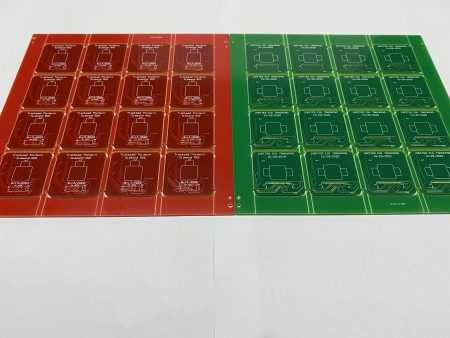- +86-755-23012705
- Building 3, Jinfeng Industrial Park, Fuyong Street, Baoan District, Shenzhen ,China
- [email protected]
Menu
 In many applications, weight and physical size are very important. If the actual power consumption of components is very small, the safety factor of the design may be too high, so that the design of circuit board adopts the power consumption value that is inconsistent with the reality or too conservative as the basis for thermal analysis.
In many applications, weight and physical size are very important. If the actual power consumption of components is very small, the safety factor of the design may be too high, so that the design of circuit board adopts the power consumption value that is inconsistent with the reality or too conservative as the basis for thermal analysis.
In general, the distribution of copper foil on PCB board is very complex, and it is difficult to model accurately.
Therefore, the wiring shape should be simplified in the modeling process, and the electronic components on the ANSYS model circuit board that are close to the actual circuit board can also be simulated by using simplified modeling, such as MOS tube, integrated circuit block, etc.
Thermal analysis in SMT processing can assist designers to determine the electrical properties of components on a PCB circuit board, and help designers to determine whether components or circuit boards will burn out due to high temperature.
Simple thermal analysis only calculates the average temperature of the circuit board, while complex thermal analysis requires the establishment of transient models for electronic devices containing multiple circuit boards.
The accuracy of thermal analysis ultimately depends on the accuracy of component power consumption provided by circuit board designers.
In many applications, weight and physical size are very important. If the actual power consumption of components is very small, the safety factor of the design may be too high, so that the design of circuit board adopts the power consumption value that is inconsistent with the reality or too conservative as the basis for thermal analysis.
The opposite (and more serious) is the low thermal safety factor design, which means that components actually operate at higher temperatures than analysts predict. Such problems are usually solved by installing a cooling device or fan to cool the circuit board.
These add-ons increase the cost, prolong the manufacturing time, and introduce reliability uncertainties by adding fans into the design, so the circuit board mainly adopts active rather than passive cooling (such as natural convection, conduction, and radiation).
Before modeling, analyze the main heating components in the circuit board, such as MOS tubes and integrated circuit blocks, which convert most of the lost power into heat during operation.
Therefore, these devices should be considered in the modeling process.
In addition, consider the copper foil on the circuit board substrate as the conductor coating.
In the design, they not only conduct electricity, but also conduct heat. Their thermal conductivity and heat transfer area are relatively large. Circuit board is an indispensable part of electronic circuit, and its structure is composed of epoxy resin substrate and copper foil coated as a conductor.
The thickness of epoxy resin substrate is 4mm, and the thickness of copper foil is 0.1mm.
The thermal conductivity of copper is 400W/(m℃), while that of epoxy resin is only 0.276W/(m℃).
Although the copper foil added is very thin and thin, it has a strong guiding effect on heat, so it cannot be ignored in modeling.






XPCB Limited is a premium PCB & PCBA manufacturer based in China.
We specialize in multilayer flexible circuits, rigid-flex PCB, HDI PCB, and Rogers PCB.
Quick-turn PCB prototyping is our specialty. Demanding project is our advantage.
Tel : +86-136-3163-3671
Fax : +86-755-2301 2705
Email : [email protected]
© 2023 - XPCB Limited All Right Reserve
